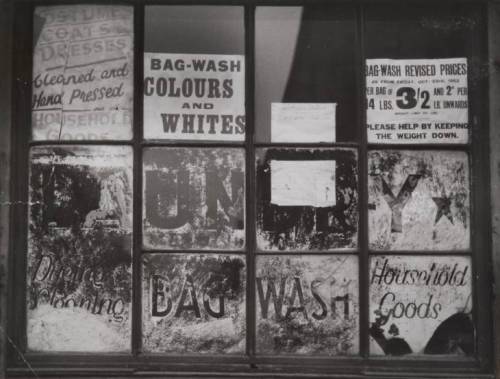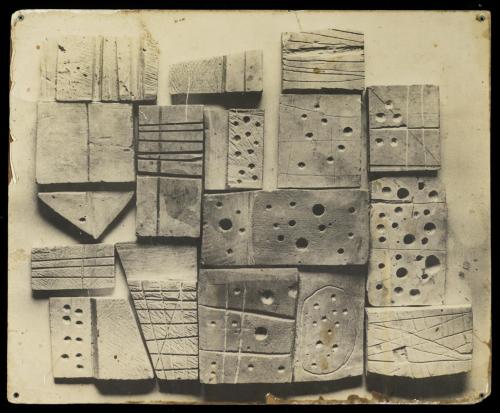#nigel henderson
Various photographs and collages by Nigel Henderson (1917–1985) from the Tate galleries online collection.
“Henderson is best known as a member of the radical Independent Group of the 1950s, a gathering of artists and others committed to the discussion and dissemination of new ideas on art practice. The Independent Group was involved in two principal areas: the use and analysis of the ephemera of popular culture, inflected primarily by America (which can be connected to the emergence of Pop Art), and the discussion of the Brutalist aesthetic, which was more oriented towards European models and the influence of Surrealism.”
Henderson was a close friend of Eduardo Paolozzi, and as mentioned previously, was part of Group 6 in the exhibition ‘This is Tomorrow’. His street photography deals with the raw textures and realities of post-war urban life. He was fascinated by distressed surfaces, graffiti, signage, surreal juxtapositions and the interesting and mysterious fragments of the city.
If there is any traction to the idea of a 'Brutalist aesthetic’ Henderson certainly captures it through his images and experiments.
All images © Tate. My other 'This is Tomorrow’ posts can be found here: http://theoinglis.tumblr.com/tagged/this%20is%20tomorrow
Post link
“Photograph showing Nigel Henderson, Eduardo Paolozzi, Alice and Peter Smithson, seated in an unidentified street.”
This image shows Group 6, from the 1956 exhibition ‘This is Tomorrow’. You may recognise it from one of the posters featured in my previous post. All four members have links to Edward Wright (the designer mentioned previously) who taught at the Central School of Art at the same time as both Paolozzi and Henderson, and was hired by the Smithsons to design the lettering for their 1956 House of the Future. Which was their vision for the homes of tomorrow, exhibited at the Daily Mail Ideal Home Exhibition.
All four members of Group 6 were also involved in the emerging genre of 'New Brutalism' (after béton brut — raw concrete) which was a term coined by critic and writer Reyner Banham in an Architectural Review article written the year before 'This is Tomorrow’. The similarities in both ideas and aesthetic between the architecture of the Smithsons, the paintings and sculptures of Paolozzi and the photography and collages of Henderson prove that there is more to Brutalism than just concrete buildings! As well as more to 'This is Tomorrow’ than just Pop Art…
Top image © Tate. The Image below is an outtake from said photoshoot (via).

Post link













